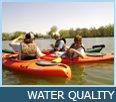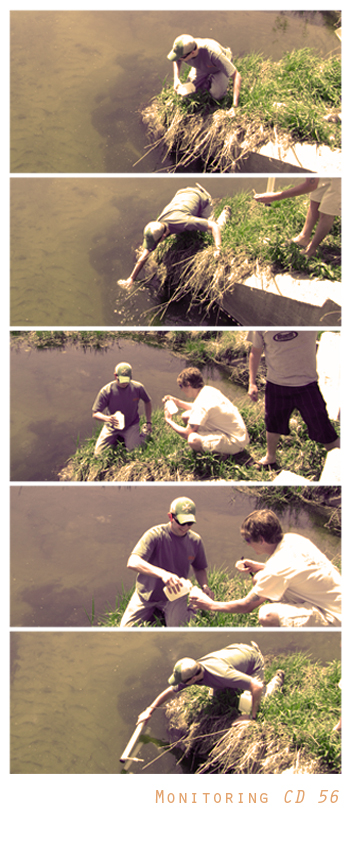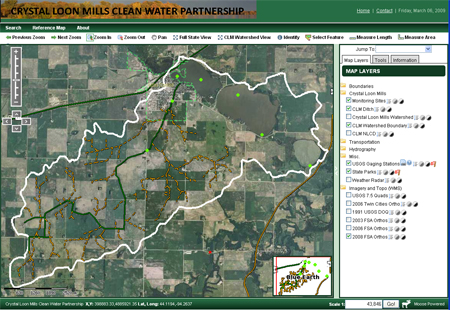        |
|
"In every glass of water we drink, some of the water has already passed through fishes, trees, bacteria, worms in the soil, and many other organisms, including people. Living systems cleanse water and make if fit, among other things, for human consumption." - Elliot A. Norse, in R.J. Hoage, ed., Animal Extinctions, 1985 .................................................................. |
Monitoring the water quality of both County Ditch 56 (CD 56) and the lakes (Crystal, Loon, and Mills) is an integral part in evaluating how 'clean' or 'dirty' the water is. Water Quality samples are collected by taking 'grab samples.' For more detail on the sampling process, click here.
CD 56 samples are analyzed at Minnesota Valley Testing Laboratories (MVTL) for nitrate-nitrite, total phosphorus, ortho-phosphorus, turbidity, total suspended solids, and total suspended volatile solids. E. coli samples are analyzed at the Minnesota State University, Mankato, Certified Water Laboratory. ..................................................................... Become a citizen lake monitor! Now that the Clean Water Partnership is coming to a close, volunteers are needed to help continue to monitor water quality in Crystal, Loon, and Mills Lakes. The MPCA’s Citizen Lake Monitoring Program (CLMP) requires only minimal volunteer time, yet provides essential information needed to maintain and improve Minnesota’s water resources. CLMP volunteers collect water transparency data using an 8-inch, circular, all-white metal plate attached to a calibrated rope which is provided by CLMP. This tool is called a Secchi disk. About once a week during the summer, volunteers boat to a designated spot on their lakes to collect transparency readings. Water transparency is a quick and easy measurement that tells scientists a lot about a lake's water quality. First, it indicates the amount of light penetration into a lake. Second, Secchi transparency provides an indirect measure of the amount of suspended material in the water, which in many cases is an indication of the amount of algae in the water. Any person or group willing to devote a small amount of time and energy to conduct simple water-quality checks on a regular basis can become a volunteer monitor. This includes anyone who lives on or near a lake or is a frequent user of a particular lake. The only restriction is that volunteers need to have access to a boat or canoe in order to take the transparency readings. To find out more info about the CLMP or to sign-up as a citizen lake monitor, visit the CLMP website.
For more exploration of the Crystal Loon Mills Watershed, click on this interactive GIS map to visit sample locations and linked water quality data.
..................................................................... Click on the links below to download maps of the watershed: Crystal Loon Mills Watershed Map ..................................................................... Minnesota's lake monitoring activities and programs are described on the Minnesota Pollution Control Agency's website. ..................................................................... Algae blooms have a significant impact on the water quality and recreational use of Crystal, Loon, and Mills Lakes. Click here for infrormation about Algal Blooms.
|
||
|


